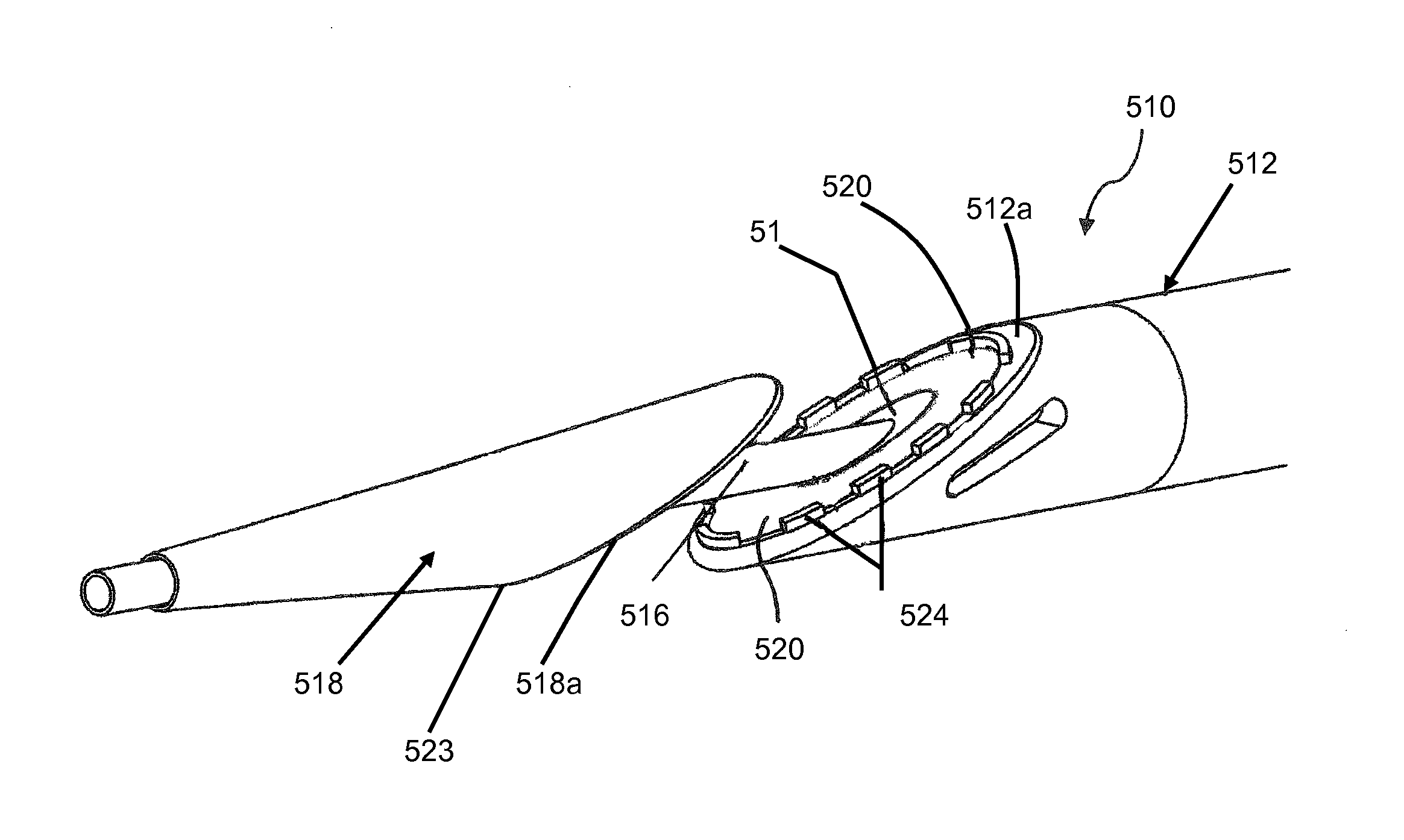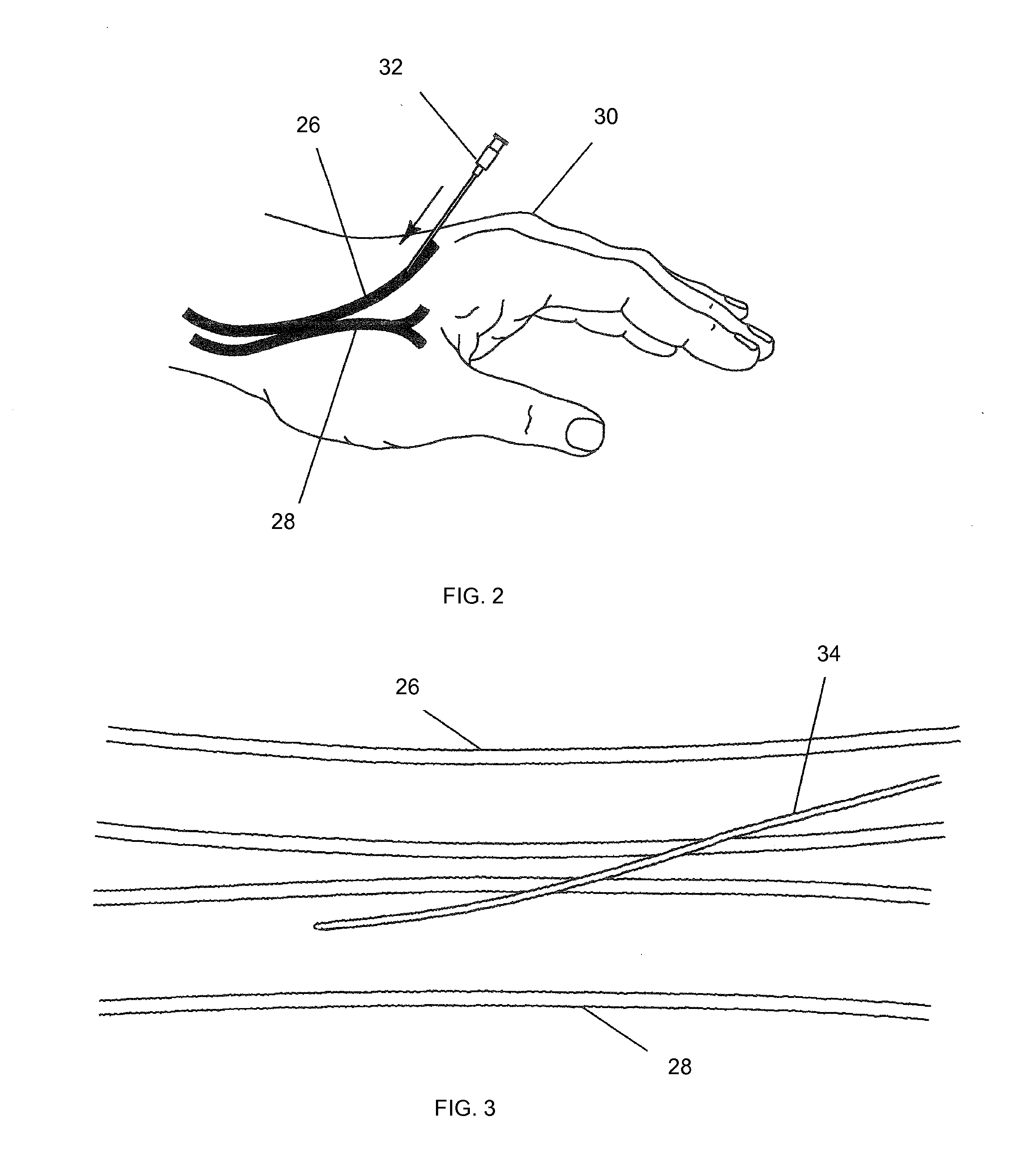Intravascular arterial to venous anastomosis and tissue welding catheter
a technology of intravascular arterial and venous anastomosis, which is applied in the field of intravascular arterial to venous anastomosis and tissue welding catheter, can solve the problems of clotting of veins or arteries, restricting operations, etc., and achieves consistent and repeatable fistula creation, the effect of reducing operating tim
- Summary
- Abstract
- Description
- Claims
- Application Information
AI Technical Summary
Benefits of technology
Problems solved by technology
Method used
Image
Examples
Embodiment Construction
[0039]Referring now more particularly to the drawings, as illustrated in FIG. 1, a DC resistive heat catheter 510 is shown, which comprises an elongate outer tube 512 having an outer diameter that can range from 3F-12F. It may be manufactured from a variety of materials, either polymeric or metallic. It comprises a central lumen 514, into which a tubular structure 516, which defines its own lumen, disposed on a tip 518, may slidably engage. There are separate lumens that run down the elongated core of the outer tube 512 for wiring heating elements 520, 522 (proximal and distal as shown in FIG. 1 and FIG. 11 respectively), disposed on aligned blunt tapered faces 512a and 518a, respectively, of the respective elongate outer tube 512 and distal tip 518, and to measure the temperature during the coaptation and cutting processes.
[0040]In the operation of this configuration, the catheter may be powered using DC resistive energy to the active proximal heat transfer element 520 with the dis...
PUM
| Property | Measurement | Unit |
|---|---|---|
| temperature | aaaaa | aaaaa |
| pressure | aaaaa | aaaaa |
| temperature | aaaaa | aaaaa |
Abstract
Description
Claims
Application Information
 Login to View More
Login to View More - R&D
- Intellectual Property
- Life Sciences
- Materials
- Tech Scout
- Unparalleled Data Quality
- Higher Quality Content
- 60% Fewer Hallucinations
Browse by: Latest US Patents, China's latest patents, Technical Efficacy Thesaurus, Application Domain, Technology Topic, Popular Technical Reports.
© 2025 PatSnap. All rights reserved.Legal|Privacy policy|Modern Slavery Act Transparency Statement|Sitemap|About US| Contact US: help@patsnap.com



